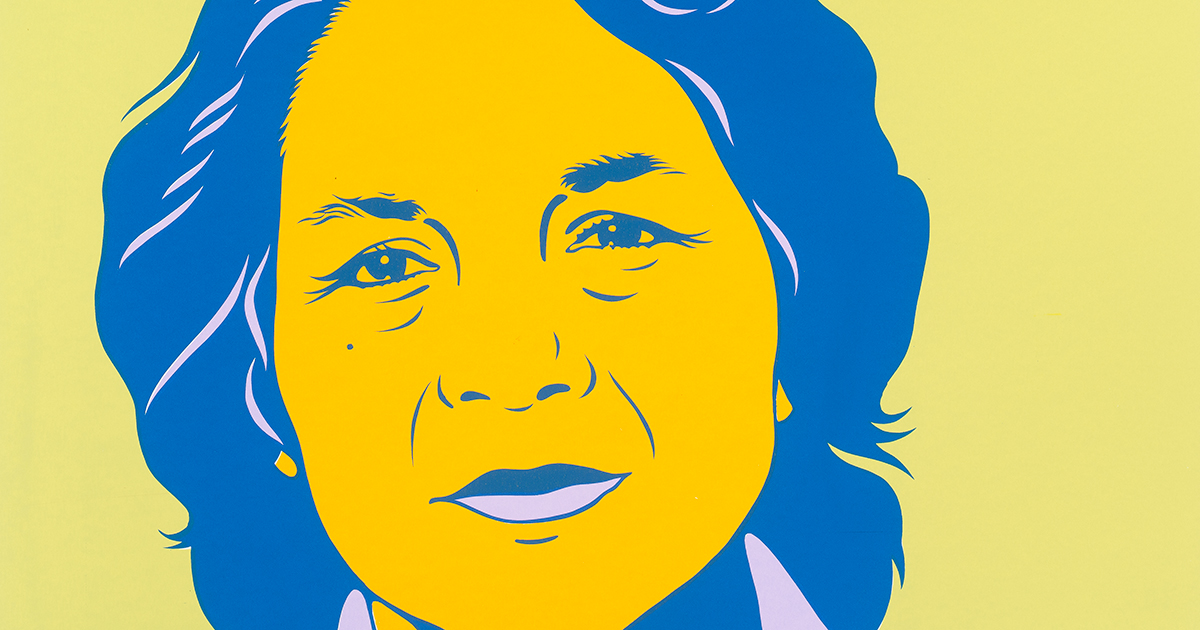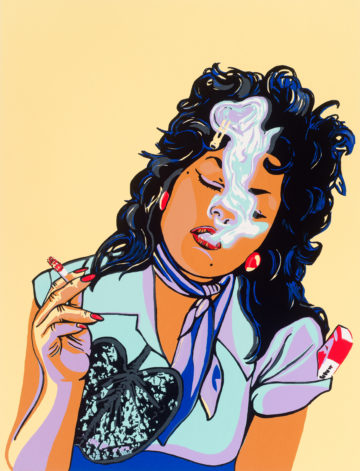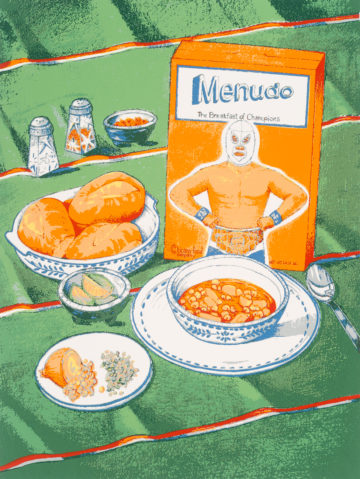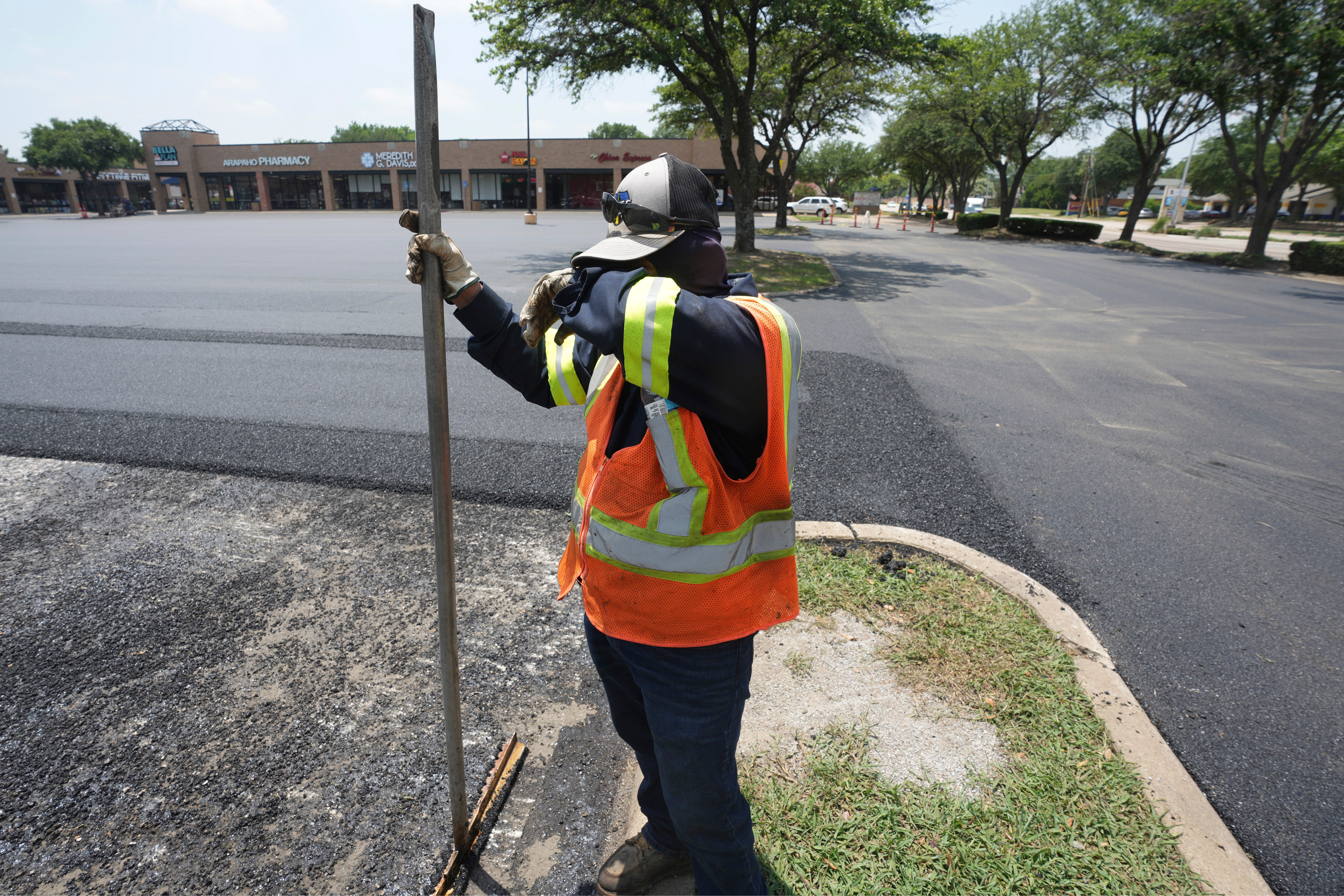
A Bold, Playful San Antonio Art Exhibit Celebrates Chicana Leaders
Through a series of colorful screenprints, “Estampas Chicanas” attempts to center the role of women in the movement for Mexican American civil rights.

Walk into the McNay Art Museum in San Antonio, and you’ll have to do a little searching to find the “Estampas Chicanas” exhibit. Pass the flashy main attraction — gleaming classic cars paired with paintings of similar hues — and head down the stairs. There, you’ll find a paperworks gallery named in honor of Charles Butt (yes, that Charles Butt — the H-E-B magnate has funded the lion’s share of San Antonio’s cultural institutions). The walls of the modestly sized room are lined with 19 screenprints by and of Chicana artists.

© Judith F. Baca McNay Art Museum Estampas Chicanas
Open until May 5, the exhibit attempts to center the role of women in the movement for Mexican American civil rights. As the introductory text notes, César Chávez has had dozens of streets named after him — there’s one in every major Texas metro, as well as in at least 11 other states — but you never find yourself driving on, say, Gloria Anzaldúa Avenue or Dolores Huerta Boulevard. It’s about time for that to change, and an exhibit like this one is a small but important step. As Alexandria Ocasio-Cortez often says, “You can’t be what you can’t see.”
The prints in “Estampas Chicanas” are bold and in-your-face, with a supersaturated pop-art feel. One piece by the artist Judy Baca, who created “The Great Wall of Los Angeles,” one of the largest murals in the world, depicts a young woman blowing smoke. With her well-coiffed hair, cherry-red lipstick, painted nails and oversized earrings, she looks perfectly composed. It’s only when you lean in for a closer look that you notice her black lungs, poisoned from the Marlboros delicately tucked into her shirtsleeve. She’s strong and sexy, but she also has a secret and a weakness. In short, she’s human. We need more art like this: work that depicts women as complex, full individuals, neither offensive stereotypes (the hardworking maid, the jealous mother-in-law) nor inspirational cardboard caricatures.
It’s impossible to look at “Menudo,” by the El Paso artist Maria Natividad, without cracking a smile. The playful green-and-orange print shows a tablescape with a bowl of menudo, a few bolillo rolls and a box featuring a lucha libre fighter and the slogan “Menudo: The Breakfast of Champions.” Wheaties sure seem stale in comparison.

© Maria Natividad McNay Art Museum Estampas Chicanas
There’s also an interactive display where visitors can learn about Chicana activists across history — from Emma Tenayuca, who at 21 led the 1938 San Antonio pecan-shellers’ strike, all the way to Emma Gonzalez, the high school student who campaigned for gun control after surviving the Parkland, Florida, shooting last year (Gonzalez is of Cuban descent, but her inclusion in the exhibit seems fitting).
Another standout piece, “Inner Landscape” by Sonia Romero, is literally a layered depiction of a Chicana woman. Her sleeping form is a black-and-white papercut that’s reminiscent of papel picado. On the bottom layer, golden bees circulate around her body, pollinating the cutout layer of vines that encircle her limbs. Lush red roses cluster around her heart, calling to mind Catholic imagery, and her limbs are sprawled out wide as she dreams. This is a woman who’s unafraid to take up space. After taking in this vibrant, unapologetic exhibit, hopefully visitors will feel the same.


